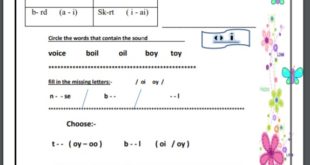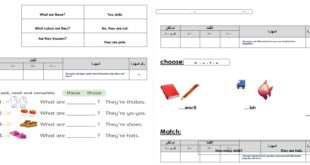قطعة ( الأم الكورية )
قطعة ( الأم الكورية )
هذه القطعة تأتي أحياناً في اختبار الكفايات (ستيب )
الام الكوريه.
Language is a way to communicate with each other. We started to learn language when we were born. However, people are used to speaking their native language, so immigrants are having many problems between the first generation and the second generation because they don’t have the same native language. Also, the second generation is losing their identity. Especially in America, there are many immigrants that came from different countries to succeed in the States. Because they suffer in lots of areas such as getting a job and trying to speak English, they want their children to speak English, not only at school, but also at home in order to be more successful. Because of this situation, their children are losing their ethnic identity and, even more, they are ignoring their parents whose English is not very good.
For example, my aunt, who has been living in Chicago for fifteen years, has three children and they were all born in the States. The eighteen year old daughter speaks English as a native language and she speaks Korean very well too. She has no problems talking with her parents, but she still doesn’t understand Korean jokes, and there are sometimes misunderstandings. The second daughter is fourteen years old, and she doesn’t want to speak Korean. My aunt often gets upset with her because she is very Americanized and they cannot understand each other. Even when my aunt punishes her, this daughter does not understand what my aunt is talking about. I felt sympathy for my aunt whenever my fourteen year old cousin said, “Mom, what is your problem?” The third child is a twelve year old son. He speaks English to his parents and my aunt speaks Korean to him as she does to the second daughter. He also has a problem communicating with his parents. My aunt is trying to teach him to speak both languages very well, but it is very hard for him because he speaks English all day and does not understand why he should learn to speak Korean.
I think most immigrants are trying to preserve their native language in their new country, but this doesn’t help very much in getting a good job. My aunt didn’t teach Korean to her children in order to help them succeed in the U.S.; she did so, hopefully, to help them establish a Korean identity. Though the second generation is born in the new country, they often get confused about their identity because they look different from others, and also, if they visit their parent’s country, they will probably feel different from other people there too. My cousins told me that when they visited Korea a few years ago, they felt different from other Koreans. They could even feel it just strolling around the street because they wore different clothes and walked differently.
We must realize that language is important and valuable for many reasons. Immigrants should make an effort not to be ignored by their children and to make their children understand their heritage by teaching them the parents’ language. This is very important, not only for the harmony of the family, but also in helping the second generation establish their identity.
قطعة ( الأم الكورية )
- Look at the title and scan the article quickly. What do you think this article will be about?
(A) Learning a second language.
(B) Immigrants who become sick in the U.S.
(C) Language and its effect on the identity of immigrants.
(D) Schools attended by immigrants to the U.S. - Which of these statements is NOT true according to the first paragraph of the article?
(A) Second generation immigrants are usually eager to learn their parents’ native language.
(B) It is often hard for first and second generation family members to communicate with each other.
(C) Because second generation immigrant children often speak only English, they may lose their ethnic identity.
(D) Sometimes second generation immigrant children ignore their parents because of language difference - Which of the following is NOT true about the 18 year old daughter?
(A) She was born in the U.S.
(B) She speaks only English very well; her Korean is poor.
(C) She gets along better with her parents than her brother and other sister do.
(D) She doesn’t understand Korean jokes well - Which is NOT a reason that the 14 year old sister has problems with her mother?
(A) She doesn’t want to speak Korean.
(B) She doesn’t love her mother.
(C) She is very Americanized.
(D) She does not understand her mother when she gets punished. - To whom does the mother speak Korean?
(A) Her oldest daughter only.
(B) All of her children.
(C) Her two daughters only.
(D) Only to her son. - Why did the author’s aunt try to teach her children to speak Korean?
(A) To help them succeed in the U.S.
(B) To help them find a good job.
(C) To help them establish a Korean identity.
(D) To help her improve her Korean language skills.
(E) None of the above. - There are many reasons that second generation immigrants may get confused about their identity. Which of the following is NOT found in the article?
(A) Their American friends may not see them as Korean –Americans.
(B) They look different than most of their friends in the U.S.
(C) If they travel to Korea they wear different clothes than the Koreans.
(D) If they visit Korea, they even walk differently than the Koreans. - Which of the following is closest to the main idea of this article?
(A) Second generation Korean-Americans walk and dress differently than their parents.
(B) Many immigrant families have problems with communication.
(C) The language spoken in immigrant households is often a mixture of two languages.
(D) Second generation Korean immigrants often speak only English.
(E) Teaching immigrant children the parents’ native language helps them establish their ethnic identity.
(Scroll down to find answers.)
قطعة ( الأم الكورية )
 بلبل English لتعليم اللغة الإنجليزية
بلبل English لتعليم اللغة الإنجليزية



